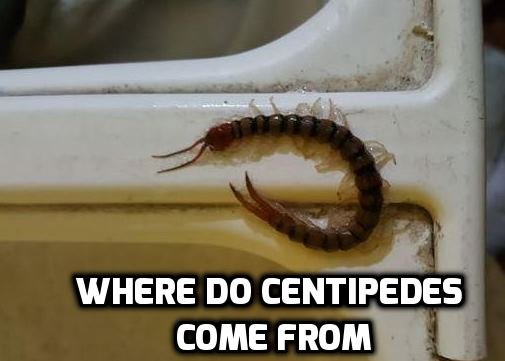What causes centipedes in the house? People might have this question when they find the centipede manifestation in their house. Undoubtedly, they want to enjoy the comfort in their house, so it must be free from intruders, including the creature with many legs.
The centipedes must be eliminated from their house, but they need to know why the centipedes enter their house to find the best solution.

Causes and Solutions for Centipede Infestation
| Cause | Description | Solution |
|---|---|---|
| Food Sources | Presence of other insects like flies, ants, earthworms, silverfish, and spiders | Eliminate insect infestations |
| Moisture | Humid, damp, and wet areas in the house such as bathrooms, kitchens, and basements | Dry wet areas, fix leaks, and remove damp materials |
| Warmth | Warm environments, especially during cold weather | Ensure proper insulation and ventilation |
| Clutter and Dark Spaces | Cluttered, dark areas provide hiding spots for centipedes | Keep house clean and clutter-free |
| Entry Points | Cracks and crevices in walls and foundations | Seal cracks and gaps around the house |
| Outdoor Attraction | Piles of timber, leaves, and other materials near the house | Keep surroundings clean and dry |
| Night Activity | Centipedes are nocturnal and can go unnoticed | Regular night-time inspection and cleaning |
Tempting Foods
People might wonder why the centipedes want to live in their house. This does not mean that they do not clean it. People should realize that they will not be the only ones who enjoy the foods in their house. Various kinds of food can be found around the house, including the centipedes’ food.
The foods can tempt them because they eat other insects, including flies, ants, earthworms, silverfish, and spiders. People can see the centipedes’ appearance as a sign of another insect infestation in their home.
That is why if people want to get rid of the centipedes properly, they have to eliminate the food source by figuring it out first.
First-hand knowledge: I once had a problem with centipedes in my house. After a thorough inspection, I discovered an infestation of spiders in the basement, attracting centipedes. Addressing the spider issue significantly reduced the centipede presence.
Moisture or Water Supply
The answer to the question can be associated with the environment loved by this insect. Centipedes love to live in humid, damp, and wet areas.
Surely, people’s homes have various areas that are suitable for centipedes. The centipedes will love the bathroom, kitchen, and basement.

If people want to prevent centipede infestation, they have to clean and dry the wet areas in the house. They should also keep piles of timber and leaves away from their homes because centipedes can often be found under log piles and bricks.
House centipedes are moisture pests. They don’t survive long in drought conditions. If your home has areas of dampness near it, your population of centipedes will be higher.
Warmth in the House
No one wants to be outside in cold weather. Of course, they want to get inside as soon as possible to get the warmth of their home. This condition cannot only be found in humans but also in centipedes. The house usually provides warmth, which is loved by the centipedes as well. That is why they will look for a way to get in the house no matter how hard people ask about where house centipedes come from.
Night Sleeper vs. Fast Runner
People usually sleep at night, so they will not witness this insect’s activities because it is a nocturnal animal. They will notice after a long period of time that it multiplies when they are sleeping. It will be easy to miss the centipedes because they are fast runners.
Sneaking is an activity that centipedes can do without getting noticed by humans. And without professional pest control, people might have to question more and more about what causes centipedes in the house.


